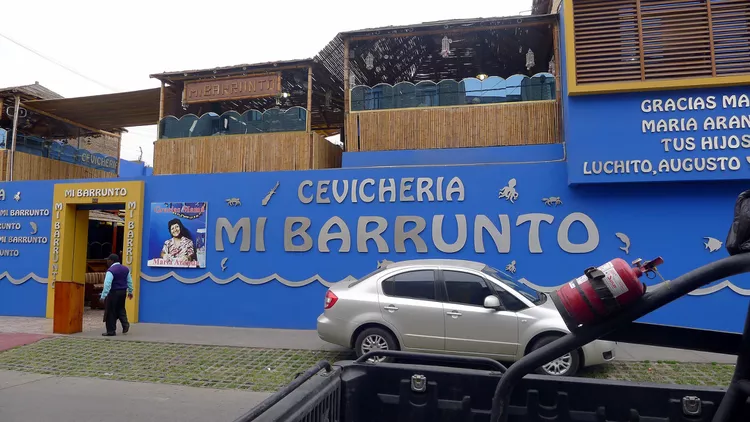Summary
The Price
In Peru, the most common way to enjoy beer—both in stores and bars—is to purchase a large bottle, typically containing 620 to 650 milliliters (21 ounces). When drinking with friends, this bottle is usually shared among the group, creating a communal experience.
Additionally, smaller bottles (310 ml) and cans (355 ml) can be found, while some bars also serve draft beer, known as chopp, which is tapped directly from a keg.
On average, a 650 ml bottle costs about S/.6.00 ($1.50). However, prices may vary significantly depending on the location and type of establishment. For instance, in a bar or restaurant near Parque Kennedy in Miraflores, Lima, a small 310 ml bottle might cost S/.7.00, whereas a large 650 ml bottle could cost only S/.4.50 at a small store in a Peruvian town. Therefore, it’s important to choose your drinking spots wisely, particularly if you’re traveling in Peru on a budget.
It’s important to note that the listed prices for bottles in small stores or larger supermarkets do not include the glass bottle itself. Some stores may charge an additional S/.1 per bottle, which is refunded upon returning the bottles. If you have bottles from previous purchases, you can simply exchange them instead of paying the extra charge.
Popular Beer Brands
While Peruvians exhibit fierce brand loyalty, the beer scene is not overly competitive, as all the major brands are owned by the same company: Backus. As the largest brewery in Peru and a subsidiary of Anheuser-Busch InBev, Backus produces the most popular beers, including:
- Pilsen Callao
- Cusqueña
- Cristal
- Pilsen Trujillo
- Backus Ice
- Arequipeña
- San Juan
Pilsen Callao, Cusqueña, and Cristal are notably the three most popular beers in the country. Most Peruvians prefer either Pilsen Callao or Cusqueña for their quality, with Cristal commonly included. Furthermore, Cusqueña offers a red lager, a wheat beer, and a cerveza negra (black beer).
Brand loyalty is often linked to regional pride, as individuals may favor local beverages, such as Pilsen Trujillo in Trujillo or Arequipeña in Arequipa. Soccer affiliations also play a role, influencing preferences based on club sponsorships and team names, such as Sporting Cristal.
Regional beers not produced by Backus include Iquiteña and Ucayalina, crafted by Cervecería Amazónica in Iquitos.
The Rise of Craft Beer
Since around 2012, the craft beer scene in Peru has been blooming, with more than 20 professional craft breweries now established. Notable examples include Nuevo Mundo and Barbarian in Lima, Sierra Andina in Huaraz, and Cerveza Zenith and the Sacred Valley Brewing Company in Cusco.
Beer enthusiasts should seek out these craft beers, as many have reached world-class quality. You can typically find them available in bottles or on tap within the bars of Peru’s larger and more tourist-oriented cities.
Traditional Beer Drinking Customs
When socializing in Peru, whether at a bar, near a disco, or during impromptu gatherings, you might experience traditional drinking practices. A key aspect of this custom is the sharing of one glass among the group, passed from person to person.
To illustrate this drinking ritual, let’s imagine Javier and Paolo enjoying a beer with three friends:
- Javier fills the glass and passes the bottle to Paolo.
- Paolo waits while Javier drinks from the glass.
- After finishing, Javier flicks the froth from the glass onto the ground—a customary practice—and hands the glass to Paolo.
- Paolo refills the glass and passes the bottle to the next person before drinking and repeating the froth flicking and glass passing.
- The cycle continues until the bottle is empty, at which point someone typically buys another one.
This informal and communal way of drinking fosters a shared experience, although it may raise hygiene concerns, with the glass moving quickly among friends and increasing the likelihood of rapid intoxication.
Drinking Laws
The legal drinking age in Peru is 18, as stipulated by Law 28681. However, this regulation is often overlooked by both consumers and vendors, with many shopkeepers willing to sell beer to youngsters as young as 13. In many cases, police officers may ignore blatant violations of this law.
An additional noteworthy legislation is the Ley Seca (literally “dry law”), enforced during national elections. This law prohibits the sale of alcohol for several days leading up to and during elections, ostensibly to maintain order and promote responsible behavior nationwide.
Drinking-Related Risks
Beyond the concern of becoming drunk and vulnerable while returning to your accommodation, it is essential to be aware of the risks associated with peperas in Peru. Peperas are typically young women, ranging from 14 to 25, who target men in bars and clubs, aiming to spike drinks. Once the target is incapacitated, the pepera steals cash and valuables, which can lead to serious trouble.





